Exploring Historic Yuma
Downtown Yuma, Arizona contains historic buildings, unique shops, and fun eateries in an easily walkable area
Yuma is a city of just over 90,000 people on the southwestern edge of the state of Arizona near the borders of California and Mexico. It is home to a number of snowbirds in the winter. And it attracts overnight guests from other parts of the state. These visitors are often en route to Los Algodones, Mexico for dental or medical work or for shopping. Many stay at hotels just off the Interstate and never explore what the Yuma area has to offer. Many miss the stories of the historic downtown area.
Yuma has been a passing-through and stopover place for centuries. Before dams were constructed up and down the Colorado River, its course was unpredictable from season to season. It ran fast and deep and stretched wide in places. At what would become Yuma, granite outcroppings squeezed the river into a narrower channel. Yuma Crossing became known as the safest and easiest place to cross the river.
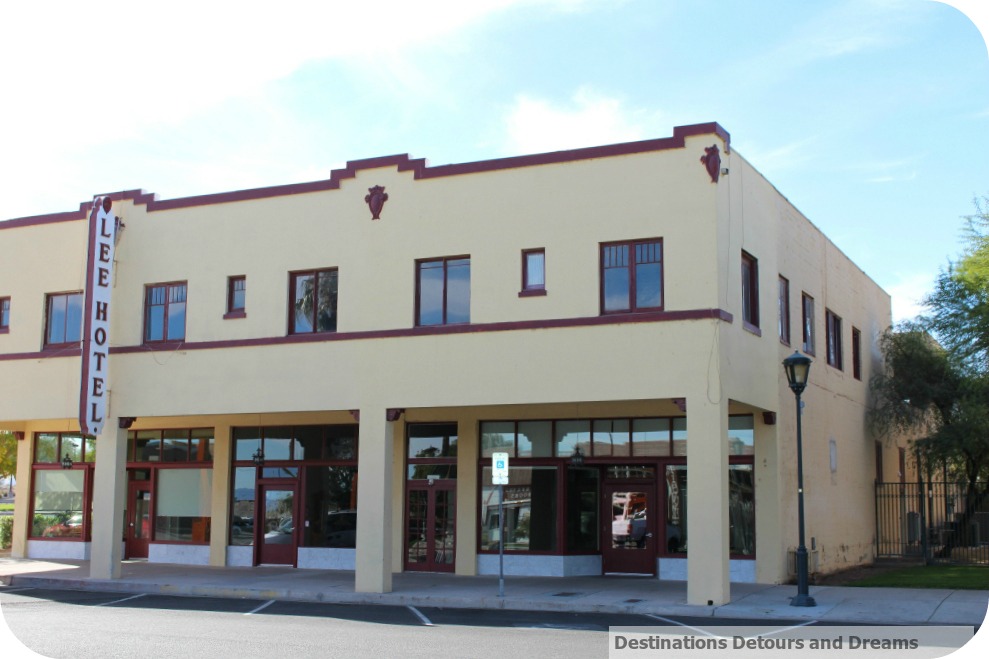
The 1849 gold rush saw thousands follow the Gila Trail (present-day Main Street) to California, passing through what was then known as Colorado City. When the town was rebuilt after 1862 flooding it was renamed Arizona City. It was incorporated in 1871 and renamed once more in 1873 to its current name Yuma. With its proximity to the water, the town was prone to flooding with the last big one occurring in 1916.
Most of the buildings on Main Street date to the 1920s when the road was paved. Many buildings on the streets just west of Main Street in the Brinley Avenue Historic District date back earlier than that.
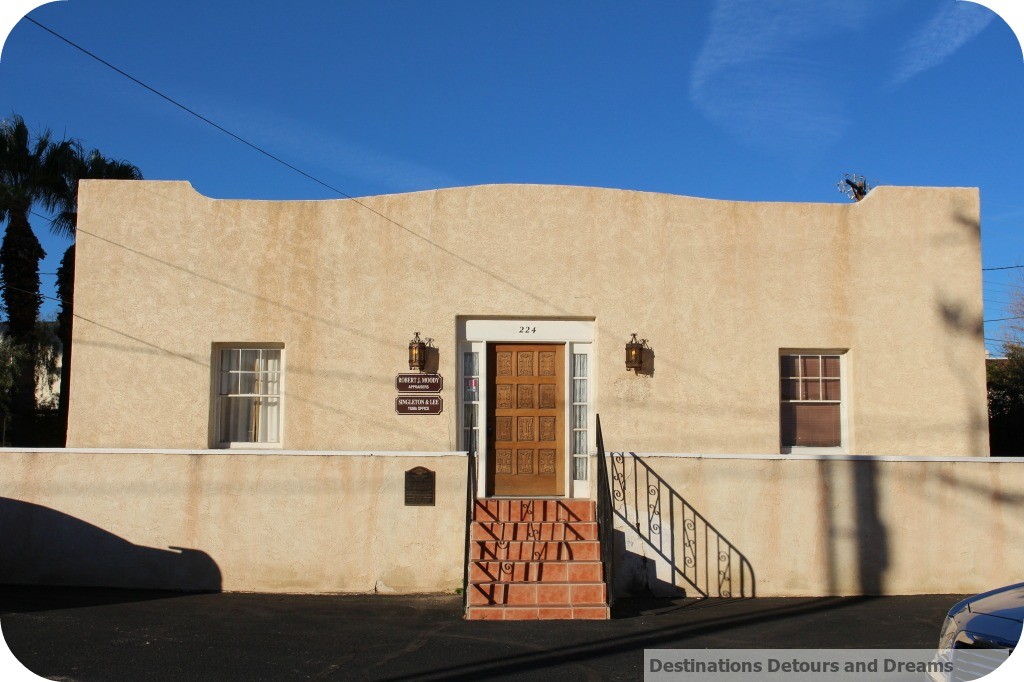
It was used as a hospital during the 1891 typhoid epidemic.
It became Yuma’s first public library in 1915 and served as Flood Headquarters in 1916.
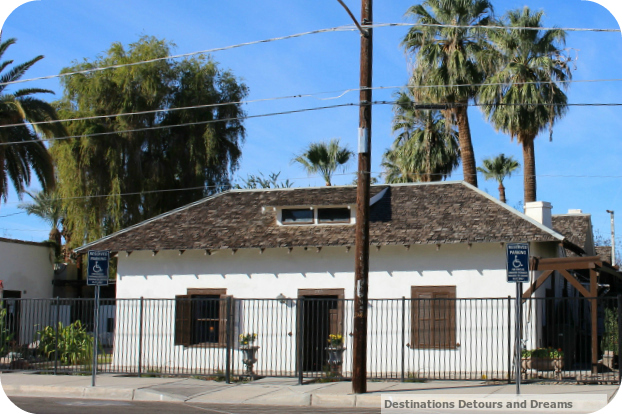
The adobe style Sanguinetti House was built in the 1870s for businessman E.F. Sanguinetti and his family. The building now houses a museum. The museum is small with minimal written information. I do not recommend spending money to visit unless you are able to have a guided tour. I came across a tour in progress given by the museum director and tagged along. The information she provided about the life of the family and the house was interesting, but I would not have learned any of it on my own. The museum director said the museum will be closing in April and new displays created in the back rooms, focusing on the life of Yuma during that time period.
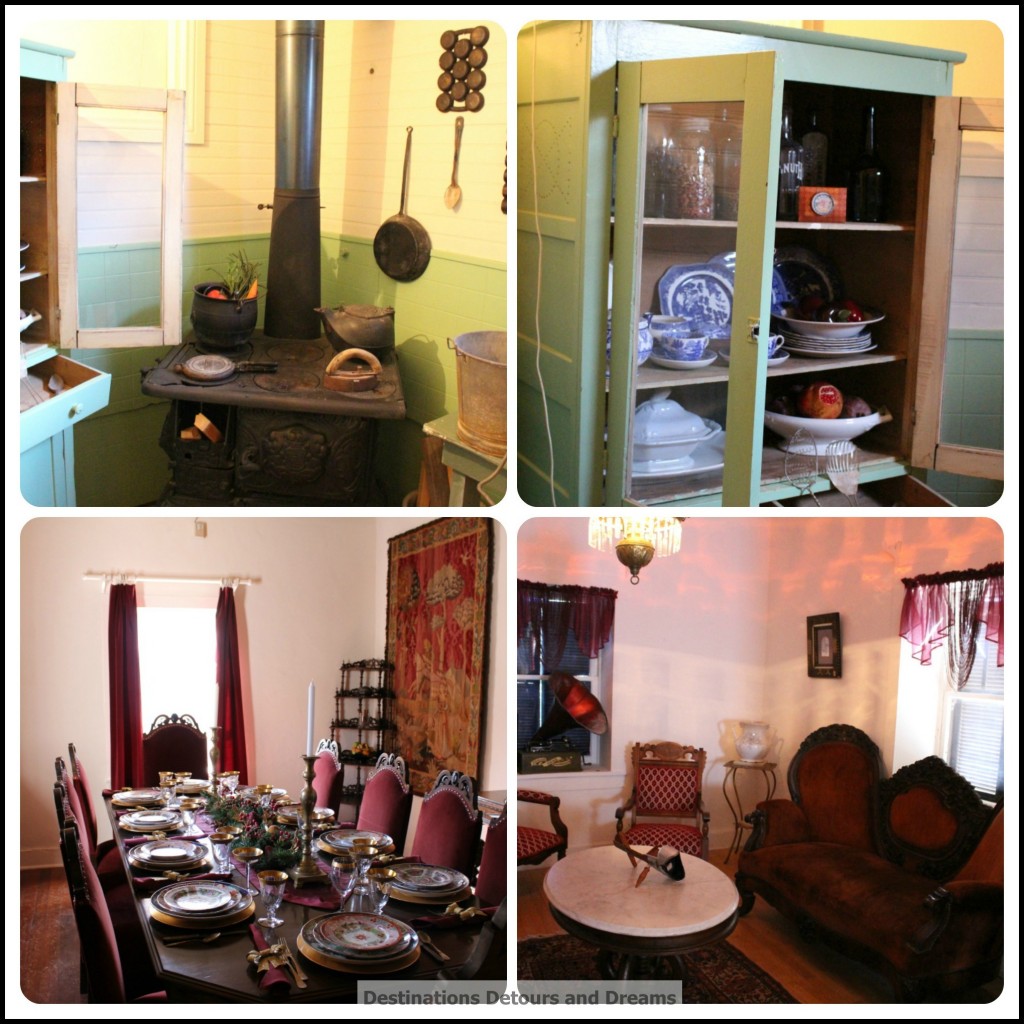
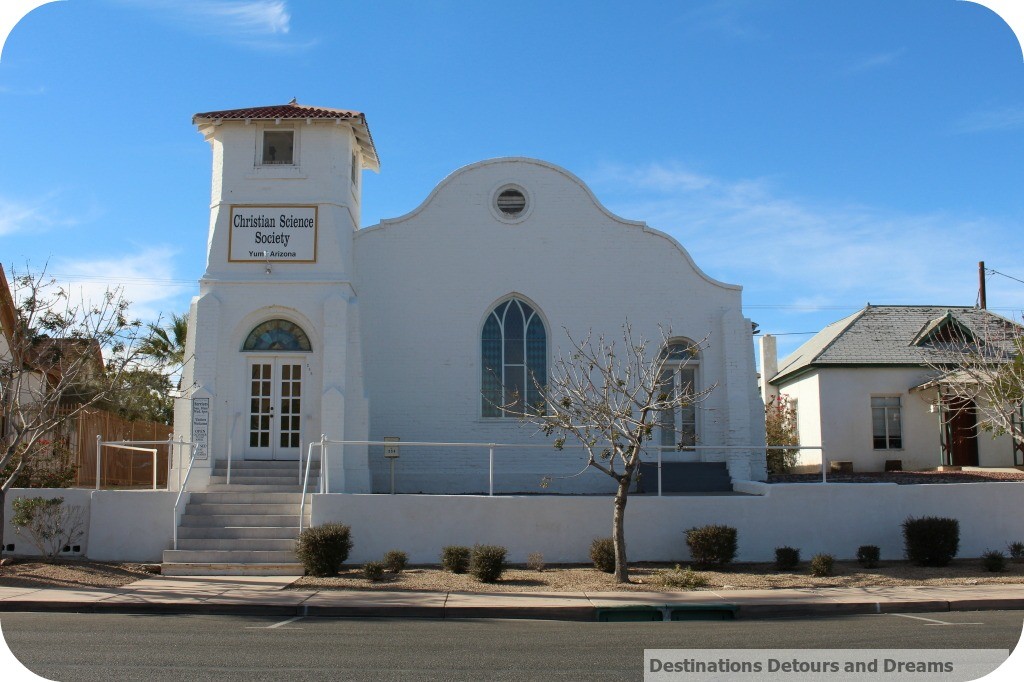
It first housed a Methodist church and later a mortuary.
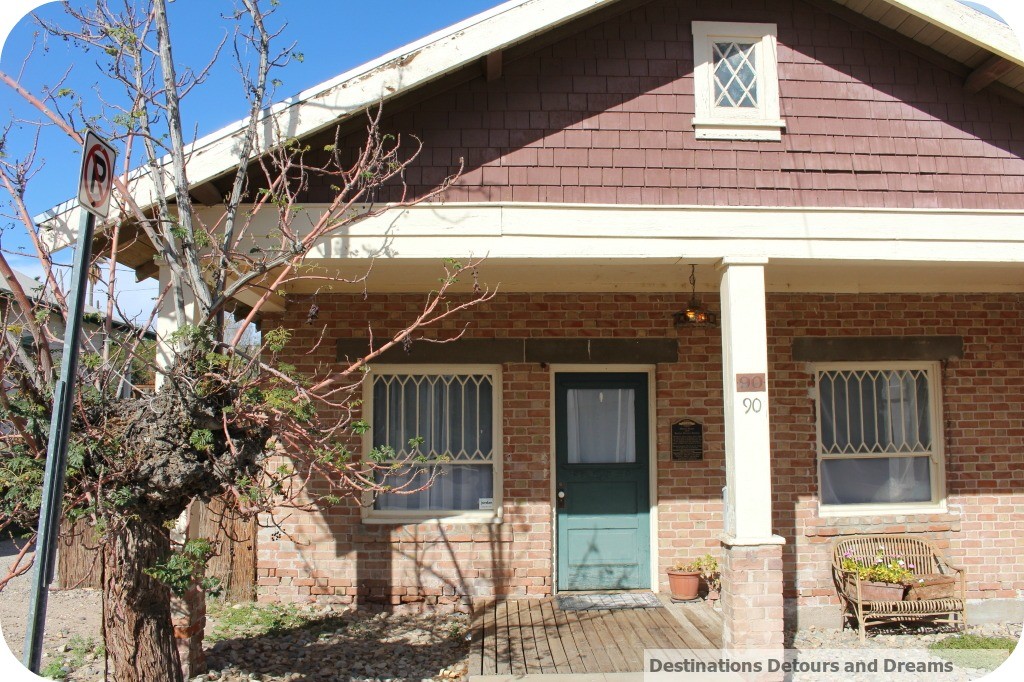
who first worked at the Gandolfo store and later operated four grocery stores of his own.
The brick structure is an example of typical middle-class housing of the day
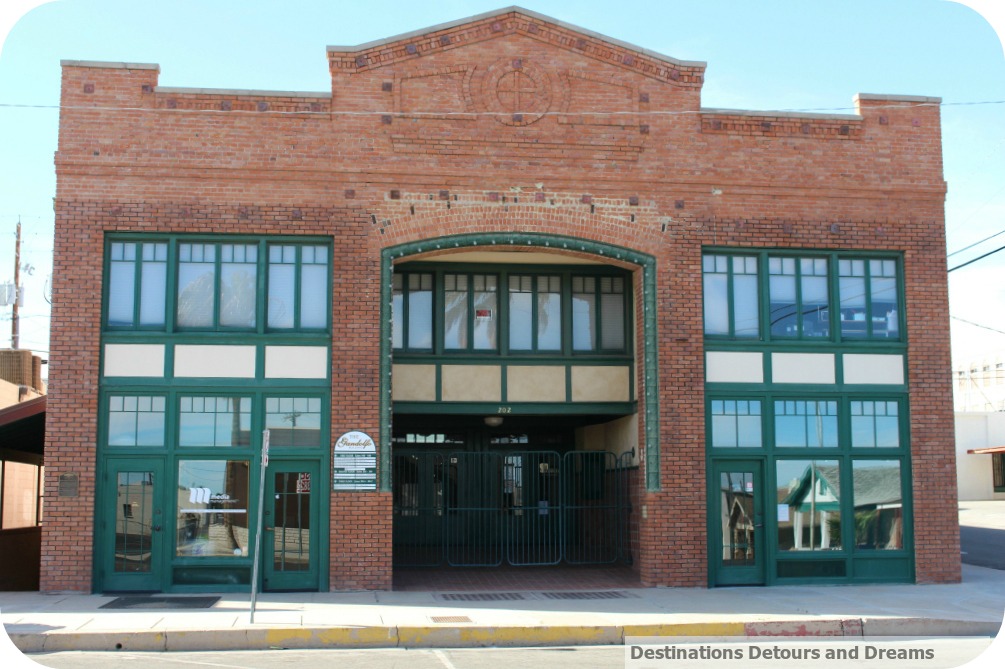
It was used as an USO canteen during World War II.
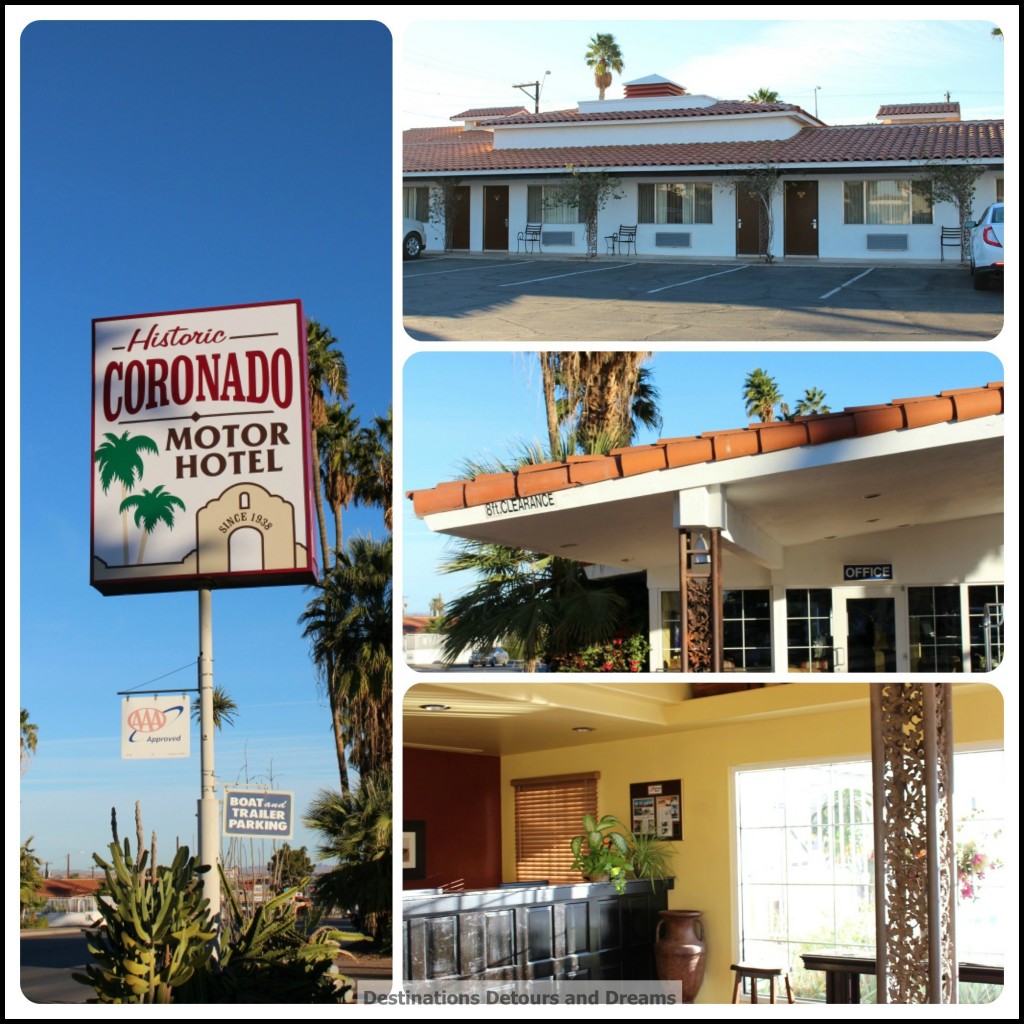
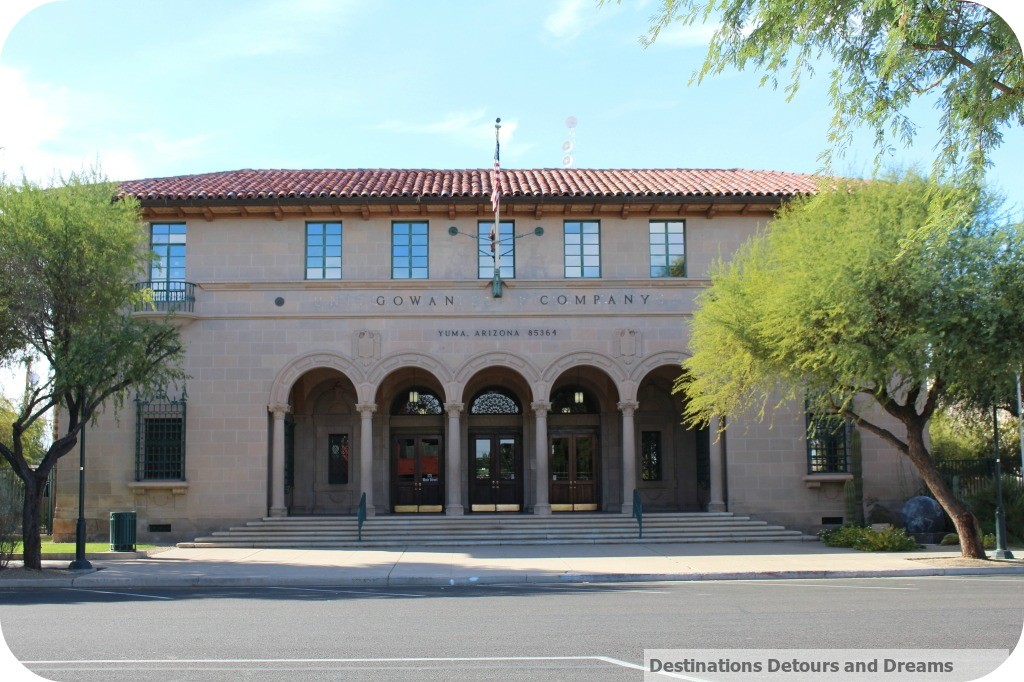
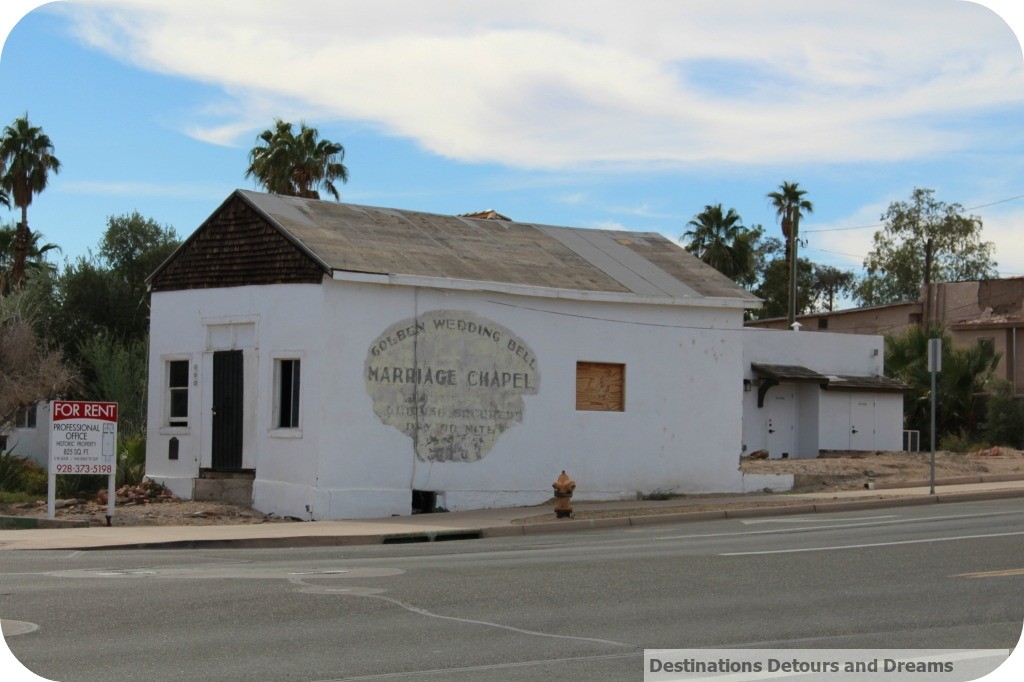
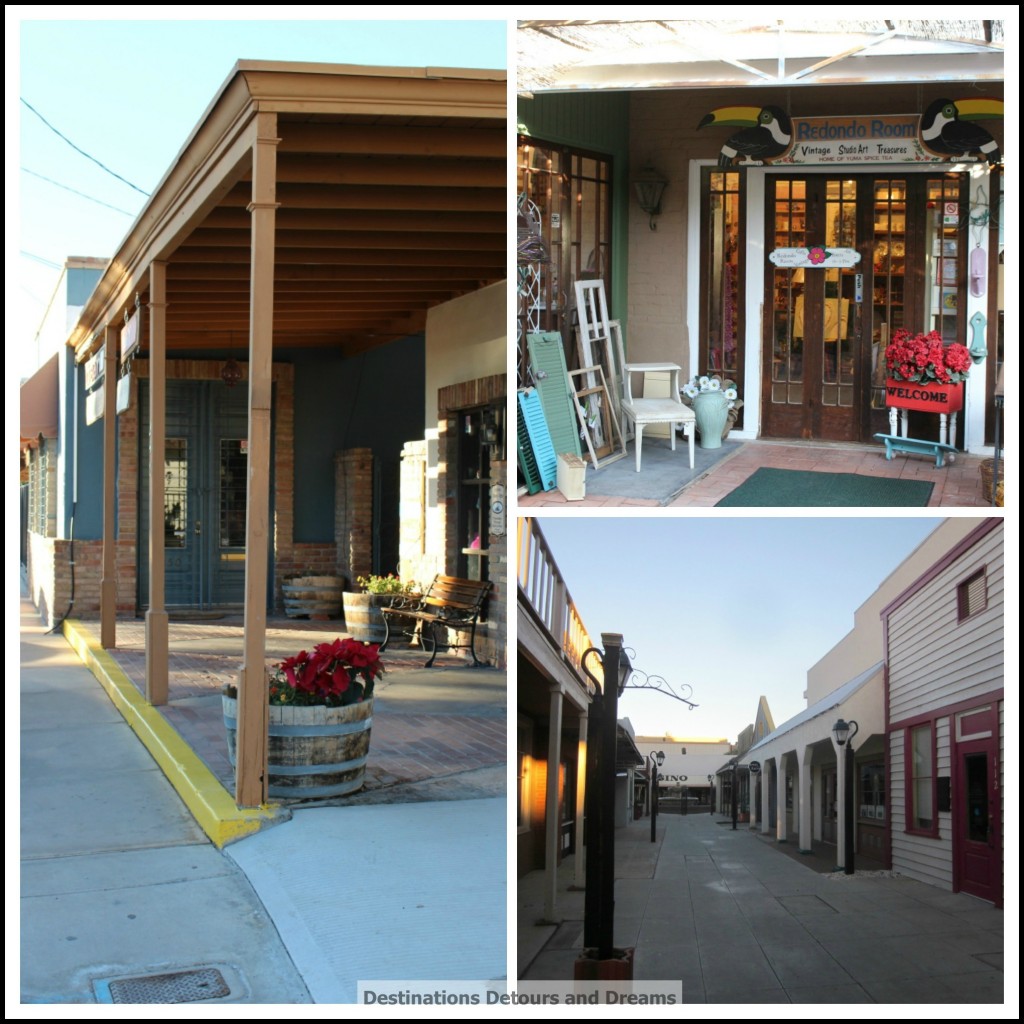
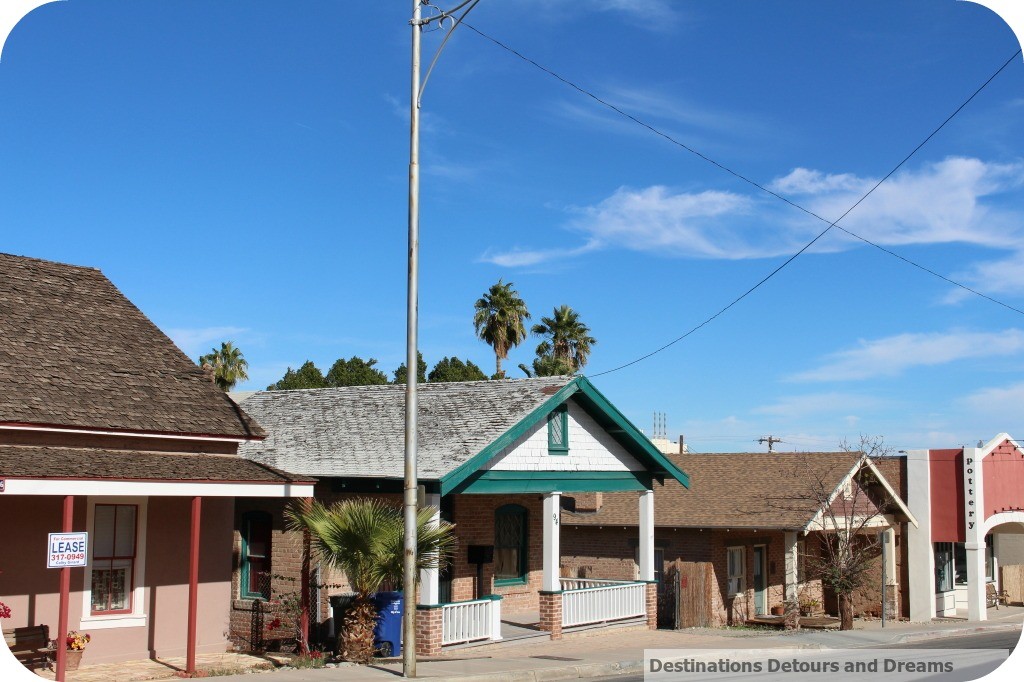
After exploring the historic buildings and browsing the shops, one might be ready for food and refreshment.
We ate at Lute’s Casino. The name is misleading. There is no casino. The best way to describe the decor is with words from the restaurant’s own web site. “The decor is early eclectic, what might be called interesting junk. And it is everywhere.” Indeed, it is everywhere, on the walls, hanging from the ceilings. The building dates back to 1901 when it was a grocery store on the main level and a hotel upstairs. It opened as the Casino Billiard Parlor in 1920. Today the restaurant serves burgers, dogs, sandwiches, soups, salads, and south of the border fare. Our food was good. I was delighted to find malt vinegar among the vast array of condiments on our table. I’ve become accustomed to eating my French Fries without vinegar in the U.S. We were here on a Sunday afternoon. A talented young man, still in his teens, played the piano.
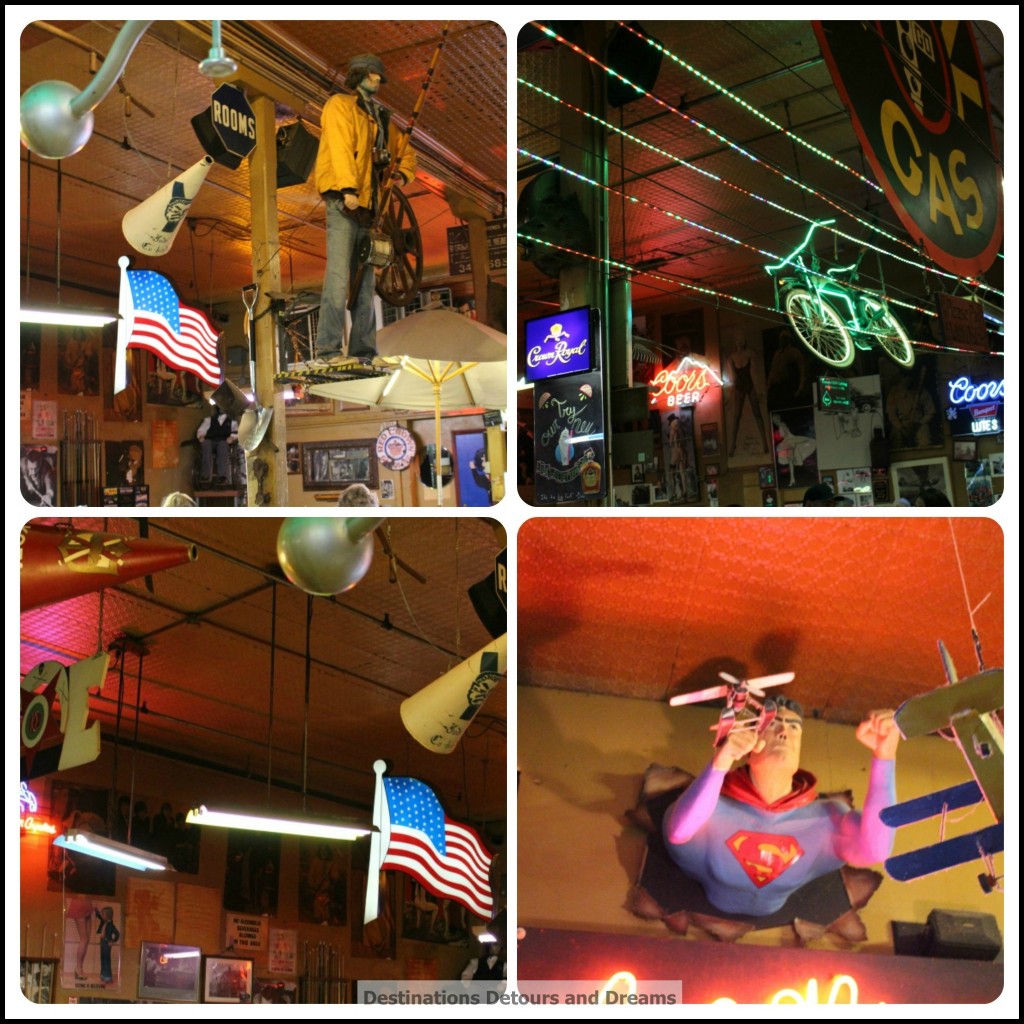
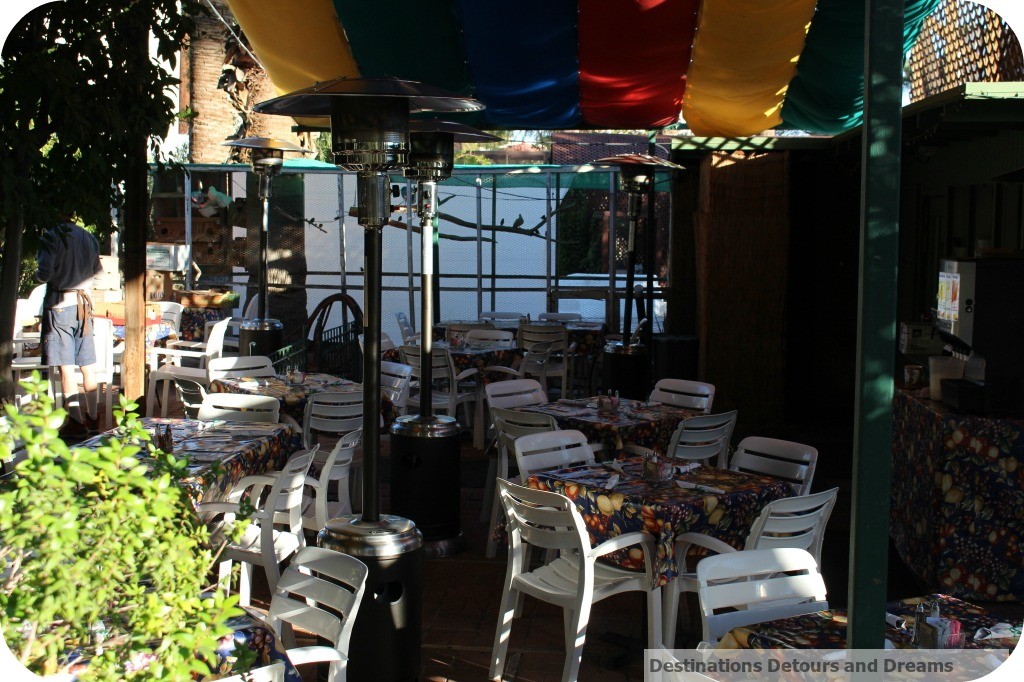
The Garden Cafe, located in a courtyard off Madison Avenue, is open for breakfast and lunch Tuesday through Saturday October to May. It is a lovely garden setting with an aviary at one end. We had an excellent late breakfast here and had the restaurant to ourselves. However, our server was very busy on the phone taking lunch reservations for later in the week.
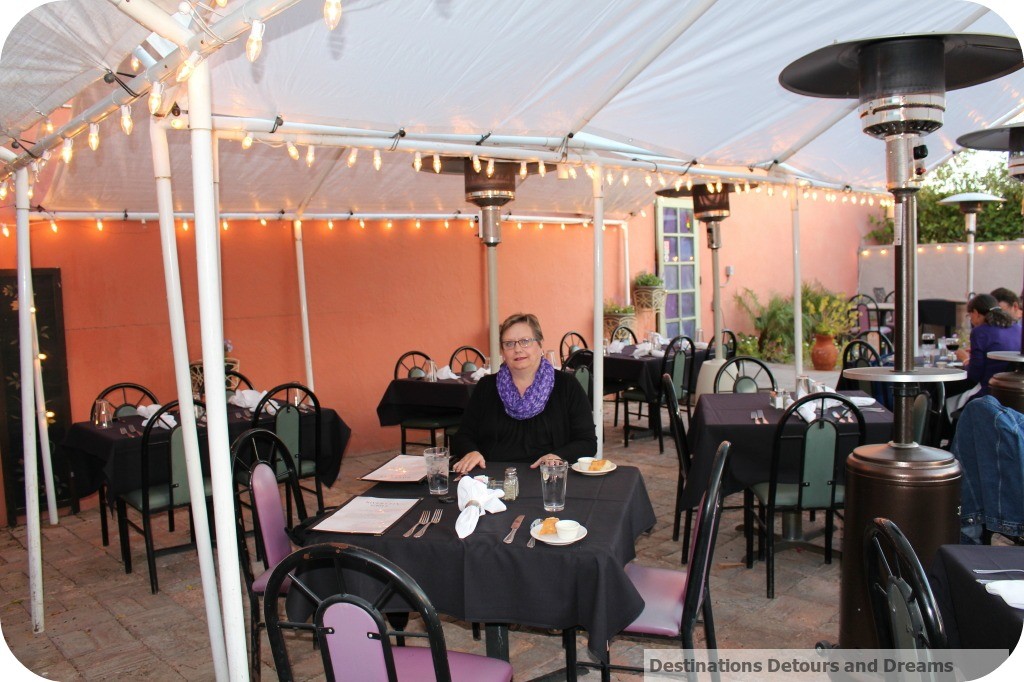
With no high-rises, angled street parking in areas and a non-busy vibe, Yuma downtown feels like a small town. It is easily walked. There are more historical buildings than I’ve showcased here. Walking tours are available, which might be a good way to learn more about the history. However, if you choose to walk on your own, there are plaques mounted on many of the buildings, providing information about the buildings and their history. Opening time for shops vary by shop – anywhere from nine to ten am. Shops generally close at five pm. Most are not open on Sundays. There is a small farmer’s market on Main Street on Tuesday mornings.
Never miss a story. Sign up for Destinations Detours and Dreams free monthly e-newsletter and receive behind-the-scenes information and sneak peeks ahead.
PIN IT
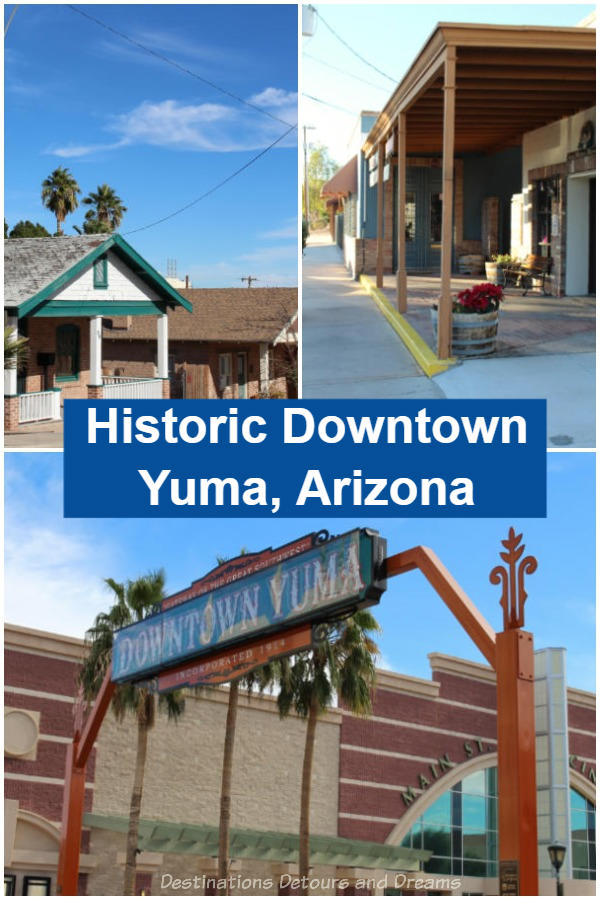

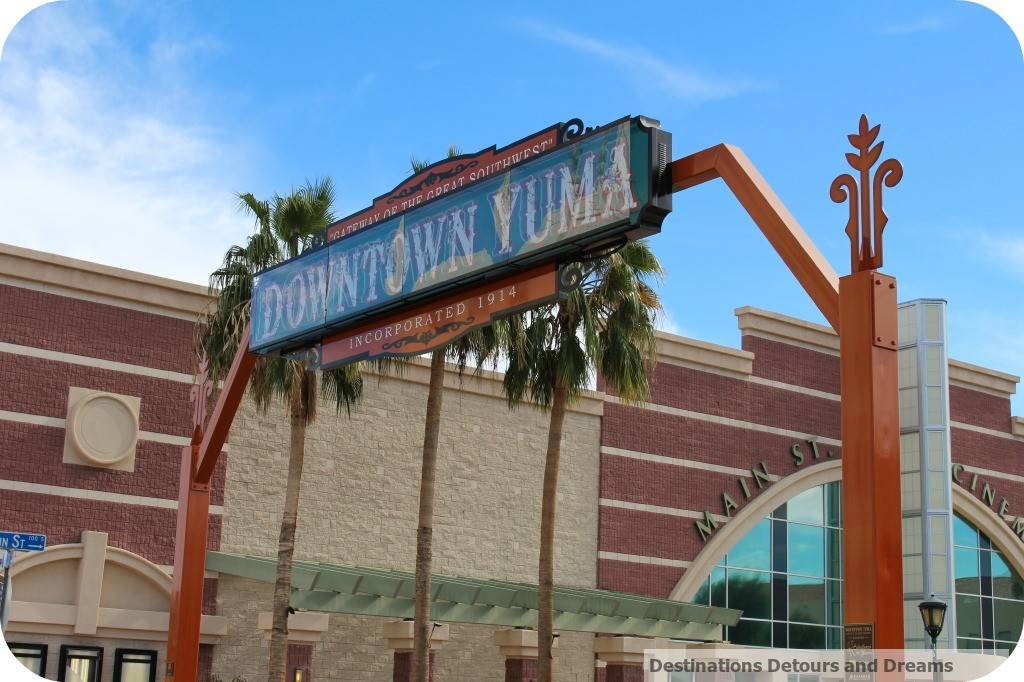
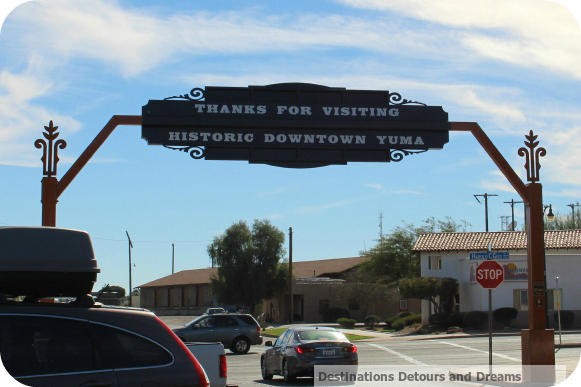
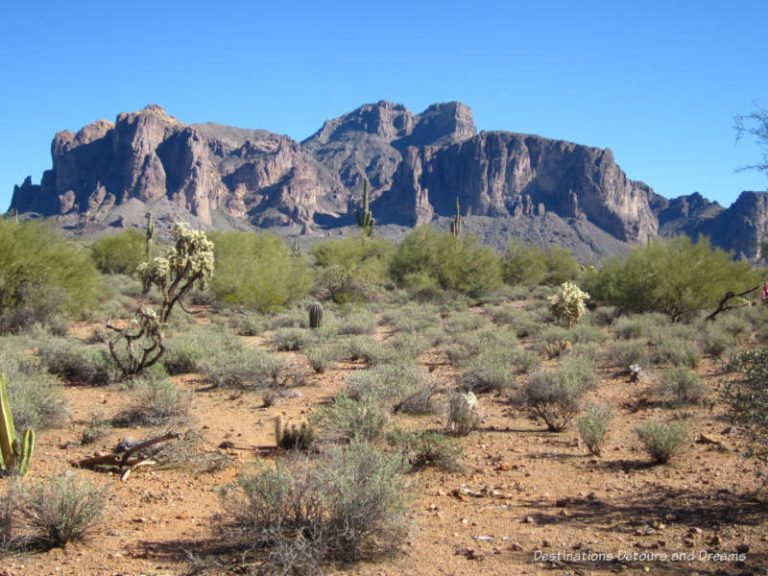
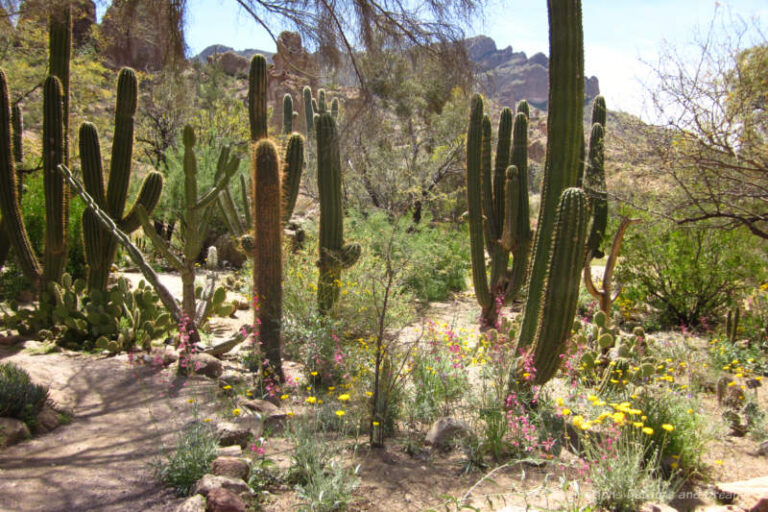
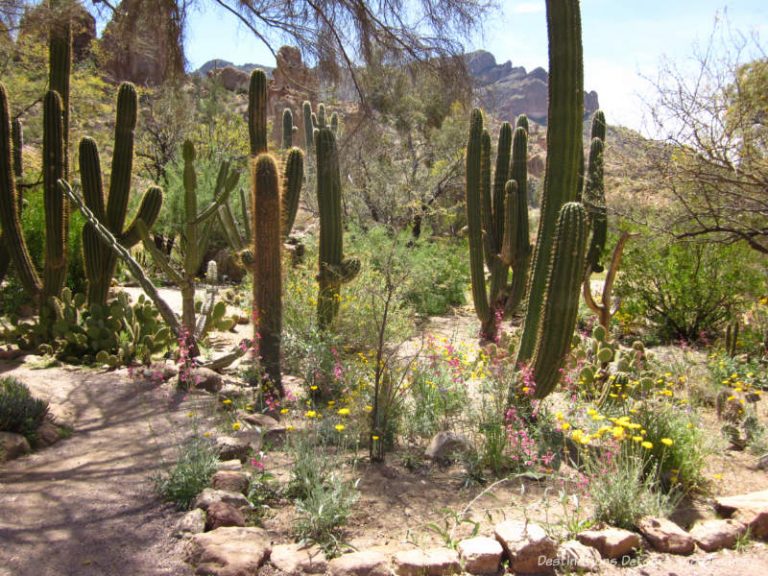
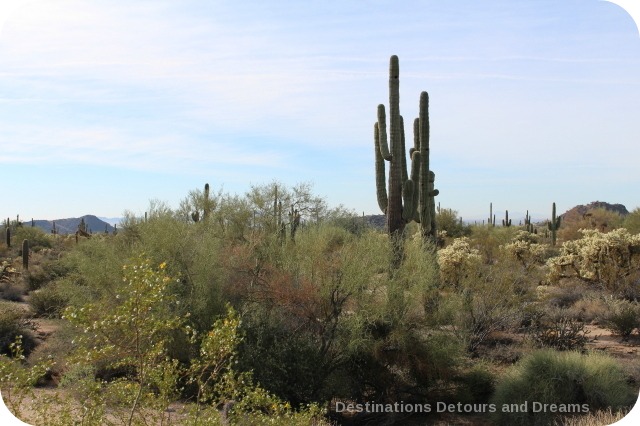
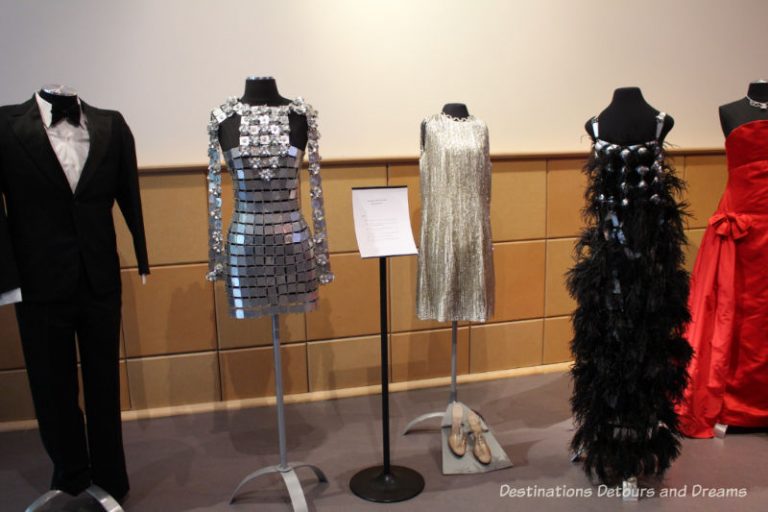
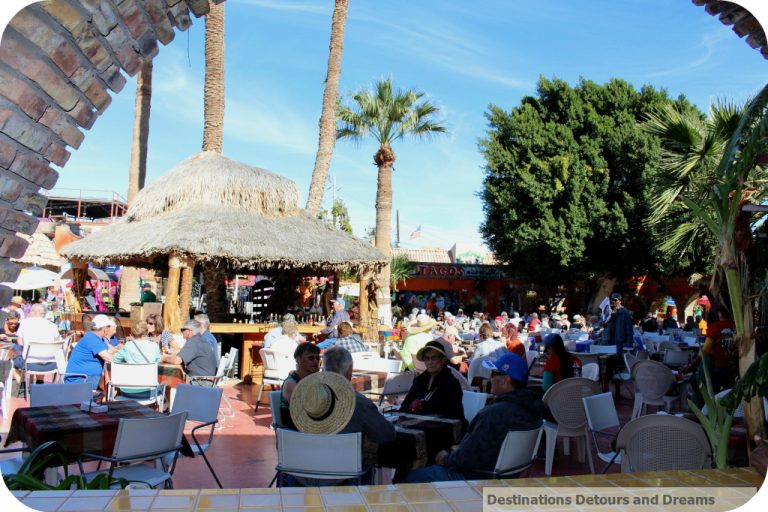
I never have been to Yuma! I can see form the great photos that it would have a small town feel. It was surprising to see German and Italian influences! Though I can’t say why:)
We noticed a lot of Italian names in the early European settlers. Not sure why, but often people followed someone they knew to the “new land” so once a few were there, I guess more came.
Donna, this was great. That was a pretty impressive Post Office considering that it was built during the depression. The town looks so clean and tidy that I can see if would be a pleasure to walk around. I bet one of the advantages of being a snowbird is that you’re able to get more in tune with the locals than just being a tourist would. Enjoyed the pictures and the write-up.
The town was fairly tidy. Not very busy either so it was a pleasure to walk around.
I love the simplicity of the architecture that the historic buildings have. If I ever get there I’m going for a room in the haunted hotel.
You made me think about my daughter and niece, in their mid-twenties, who talk about doing a road trip some day staying in haunted hotels across America. Not sure that would be my cup of tea.
I’ve never been to Yuma, Donna. I’ve only been in Phoenix and Scottsdale in Arizona and only for a short time. The dry heat reminded me of a sauna and was different from climates I’m used to. Did you like Yuma? Is it a place you could imagine being home? Thanks for sharing. It’s always interesting to be introduced to new places. 🙂
It is hard to say whether a place could be home after only seeing it for a couple of days. Although I like to think I could live anywhere, I don’t think Yuma would be my first choice. There is lots nice about it – not as busy as the Phoenix valley and therefore also better air quality. Some interesting things to explore, but not the same number of opportunities and things to do as in the Phoenix valley. The desert landscape seemed browner to me around Yuma. Around Phoenix, there are many shades of green.
Like many I’ve not visited Yuma. From your images and description, I do believe I’d enjoy the experience. I’ll be in Scottdale this spring for a wedding. This may be a good time to see the sight in the area including Yuma City
There is so much to see and do in the greater Phoenix area even if you don’t venture further afield to Yuma.
Wow! Yuma looks like a fun place. Ive never been to Arizona, and am more familiar with New Mexico, but I can certainly
See similarities with the architecture , and it’s history to a certain extent. Thanks for the Peek:-)
I have been to New Mexico but have not spent much time there. There is some shared history with Arizona so it’s not surprising you saw some similarities.
I love the mission church. David and I travelled through New Mexico a couple of years ago and I fell in love with Adobe architecture. Now I’m going to have to go to Yuma.
I too love the adobe architecture.
Love the history and culture you share Donna. I’ve been to Arizona many times, but never to Yuma. I can see I’ll have to correct that oversight on my next visit!
Thanks Marquita. I enjoy digging a little into the history of a place.
Donna, I have heard of Yuma but never been there. After reading your post, and seeing your photos, I’m convinced to add it to my next stopover in Arizona!
Thanks Corrine. Many people pass through Yuma and miss the downtown area, which I found quite interesting.
Yuma is a neat little town, but I’ve only been there in the summer, and you really don’t want to spend any more time than necessary outdoors! I imagine this time of year the temperature is a little more reasonable than the 120 degrees that I’m used to there. 🙂 Great pictures!
I doubt I have done the exploring I did in 120 degree temperatures.
Donna, what made you pick Yuma for a multiple day stay? I’m not sure I’d find much to keep me there for more than half a day— especially since now that I can look at your photos, I don’t need to go there. 😉
That’s a good question Suzanne. I’ve been interested in seeing what Yuma was like for a few years now. I have an aunt and uncle who used to winter there. Also wanted to see what Los Algodones across the border in Mexico was like. We were in Yuma for 2 nights (about 3 days of time to do things). Although Yuma doesn’t have as much to see and do as larger centres, we were busy and found lots to see and do for the time we were there. I could have found things to do for a couple more days I think. Yuma is a big agricultural area and Farm to Table tours have become quite popular, but we didn’t have time to take one of those in. This is our first winter without dogs. Although we miss them, we now have more freedom to take longer day trips or overnight trips. I decided this winter to do a little bit of exploring beyond the greater Phoenix area. My husband is okay with that and gladly (mostly) accompanies as long as I don’t plan excursions too frequently or close together.
What a great post. I will look forward to travel to Yuma someday.
Your post reminds me of when I went overseas. You mention some historical places that were built in the late 1800’s. In these countries something historic was anything older than 500 years. I guess that is a blessing to live in a “newer” country like ours
William, most of the historical buildings in North America are certainly not as old as those overseas, but there are still many interesting buildings from a historical perspective. There is a lot of North American history that goes back well over 500 years and can be found often in native ruins.
Hi Donna: I’ve never been to Yuma (or not that I recall!) Looks like you really ate up a storm during your visit! Glad you’re having fun away from the ice and snow. It’s darn cold here in MB!!!
Doreen, we were in Yuma for 3 days – we had to eat during that time. Stay warm.
I live in Arizona but haven’t visited Yuma yet. We have friends that spend a few wintery months there each year. (I live at 5000′ altitude so we get some cold weather, even though it’s AZ.) Your descriptions and colorful pictures are going to be my push to visit Yuma.
Thanks Beth. You may want to visit Yuma in the winter as a break from your cold. I understand it gets pretty hot in Yuma in the summer.
I so appreciate the virtual tour. I have never been to Yuma and don’t really have plans to – your photos were fabulous!
Thanks Suzanne.
Can’t think of Yuma without thinking about Dan Evans trying to put Ben Wade on that train at 3:10. Does Yuma even have a train?
Yes it does have a train. The Southern Pacific Railway first ran through Yuma in 1877. In 1971 passenger services were taken over by Amtrak, which still runs through Yuma. I haven’t seen the movie 3:10 to Yuma, but would like to now that I’ve visited Yuma.
Donna,My husband and I absolutely love Arizona. We’ve flown into Phoenix before (twice) and headed up to Sedona. We love Sedona so much that we’ve talked about retiring there someday.I had no idea where Yuma was until I read this. It definitely looks like a place I’d like to visit. From Yuma, we could drive to San Diego and then up the coast. Sounds like a plan to me! Thanks for sharing your trip with us!
Yuma would be a nice stop along the way to San Diego. I too love Sedona – beautiful place.
Wow beautiful! My kind of Town. Love the Simplicity and all.
Never been to Yuma. What a fab photo diary.Thanks Donna for taking me along
Thanks. I’m glad you enjoyed the photos.
Shared this on Facebook with some AZ located friends…I’m interested to know if they’ve ben and I’ve tucked this away in my go-to file!
It will be interesting to hear your friends’ perspectives if they’ve been.
What an interesting looking town. I’m surprised to see the Italian influence. The Christian Scientist building surprised me as well, I didn’t notice a school building. Do you know if Yumas’s population was more transient than permanent?
I get the impression from what I saw and read that there was a substantial permanent population. Just no schools captured in my photos.
I have never been to Yuma. It looks historical with so many European look buildings. This looks like a kind of place one could just sit and watch the world go by.
The downtown has a historic small-town feel for sure.
The city looks so calm and clean. Thanks to you, I got to learn about a beautiful city.
I like cities and towns less populated and with some history.
Cool snaps too, Donna
Thanks Tuhin. Calm is a good description.
Lovely post Donna! Yuma looks like a charming place to visit. I’ve never traveled to Arizona but it’s on my list of U.S destinations to explore. I’m drawn to the simple, rustic architectural feel of the city, particularly the burst of color in the Downtown area.Thanks for sharing.
I know it has been some time since you visited Yuma, but there is quite a bit more to experience than our downtown area (which is full of amazing architecture, history and the arts!) Someone asked about a school here – one of the most reported schools has to be Yuma High School, whose mascot is the Criminal! When the Yuma Territorial Prison closed in 1909. The high school moved into the prison from 1910-1914. If you do come during our cooler months, definitely take a drive all over our county and take in the beautiful winter agriculture – Yuma is the winter vegetable capital of the world! I am a Yuma transplant, having moved here in 1993 from Southeastern Arizona. It has been a phenomenal place to live, work and raise our family!
Hi Jennifer, I only spent a couple of days in Yuma, but I did manage to see a little bit more than downtown. I visited the Yuma Territorial Prison, the Colorado River State Park, and a date farm. I wrote about all of those. It has been a few years since I visited and I’m sure there’s a lot more I could discover on a future trip. And I’d also love to spend more time exploring the downtown. I’m not sure when a future trip is likely to happen. It’s nice to hear about how much you enjoy living in the city.